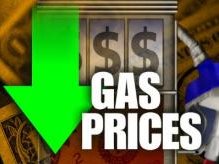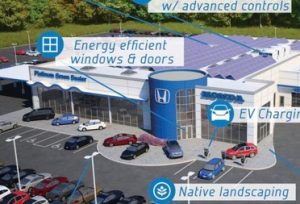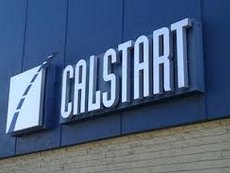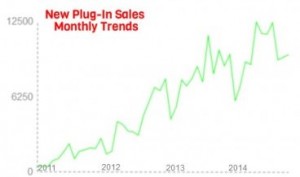by Jon LeSage, editor and publisher, Green Auto Market
Here’s my take on the 10 most significant and interesting occurrences during the past week…….
- Tesla Motors’ stock price fell below $200 on Tuesday of last week after reaching a high point of $284.89 in September. The price has continued to move back up in the past few days (finishing at $222.60 when the market closed yesterday). The price started declining during the fall in line with a 50% drop in crude oil prices since August. Earlier in December, the average US gasoline price dropped to $2.75 per gallon versus $3.27 a year ago. Along with dropping gas prices, analysts think Tesla stock price decline relates to the company scaling back production of the Model S by 2,000 units after an assembly line took longer than had been planned for. Another development was pushing back the delivery date of the long-delayed Model X crossover to the third quarter of 2015.
- President Obama has signed The Tax Increase Prevention Act of 2014 extending the natural gas vehicle fuel credit of .50 cents per gallon equivalent through the end of this year. Natural gas refueling equipment has received a tax credit through the end of this year identical to one being granted to electric vehicle charging stations — a $1,000 credit for home refueling appliances, and a 30-percent investment tax credit up to $30,000 for businesses.
- US Environmental Protection Agency (EPA) regulations on electric power plant carbon emissions will likely be dragged out a long time. The January 8, 2015, deadline may be missed due to being late in the process of receiving public comments. It’s also likely to hit a roadblock from a more hostile Congress over the next two years. This has been possibly the biggest move by the Obama administration on environmental policy, and it faces an uphill battle. On Friday, the EPA did set the first national standards for disposal of coal ash from coal-fired power plants; coal ash has been classified as solid waste instead of a hazardous material. EPA says the final rule establishes safeguards to protect communities from coal ash impoundment failures and establishes safeguards to prevent groundwater contamination and air emissions from coal ash disposal.
- Second generation biofuels should reach $23.9 billion as a global market by 2020, a combined annual growth rate of 49.4% from now until 2020. The market report by Allied Market Research says that while biodiesel is the highest produced second-gen biofuel, cellulosic ethanol should surpass it within the next two years. North America holds the largest regional market share, followed by Europe. Growth drivers should be favorable regulatory policies and the fuel’s environmentally friendly nature.
- Job training programs continue: I-CAR has launched the Alternative Fuel Vehicle Damage Analysis and Safety (ALT03) The live, instructor-led program is worth three credit hours and is designed to enhance a collision repair professional’s understanding of how to safely approach all types of alternative fuel vehicles. “Each vehicle will require specific knowledge about the different risk avoidance elements engineered into these vehicles from a propulsion system perspective,” says Josh McFarlin, I-CAR Director of Curriculum & Product Development. “This makes building knowledge on the different alternative fuel vehicle types extremely important.
- Carbon War Room has merged with Rocky Mountain Institute in a campaign designed around combatting climate change and accelerating demand and financing for low-carbon solutions that are technically viable and cost effective. Carbon War Room, co-founded by Virgin Group Chairman Richard Branson, has been active in clean transportation including its alliance with Freight Efficiency.org. Rocky Mountain Institute has conducted major studies on electrified transportation. Earlier this year, the two organizations worked on a joint project, the Ten Island Challenge, that’s supporting transitioning Caribbean island energy systems from imported diesel to renewable sources such as wind and solar.
- Beverage delivery fleets are increasing fuel efficiency. Coca-Cola, PepsiCo, and Dr. Pepper Snapple Group have increased the fuel economy of their fleets by 12.6% since 2010. The improvements come from an industry-wide initiative in which the three beverage companies agreed to share proprietary data on their truck fleets with the American Beverage Association.
- Tesla Motors next week will start a pilot battery swap program with Model S owners. They can set an appointment and show up at the Tesla shop in Harris Ranch, Calif., which is across the street from a few Tesla Superchargers. Right now it’s taking about three minutes to swap these batteries due to the titanium and hardened aluminum ballistic plates shielding the battery pack; the goal is to reach one minute for the swap through further automation and refinements of the vehicle.
- It’s taken a long time, but Nissan is getting ready to roll out its NV200- based taxi cabs on the streets of New York City. April 20, 2015 is the start date of the city’s Taxi of Tomorrow program, and it follows a stream of public debate and legal challenges. Nearly all of the older Ford Crown Victoria taxis on the streets of New York will have to convert over to the modified Nissan NV200 vans. Advocates of the NV200 cite benefits for taxi fleets including more room and better visibility for passengers and improved fuel economy for fleet operators.
- Tesla CEO Elon Musk’s “hyperloop” high-speed rail project just issued a 76-page report. The project, which is being developed through another of Musk’s companies, SpaceX, acknowledges the project is still in its infancy, but this is the first time since the announcement last year that more details and research findings have been revealed.












